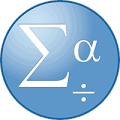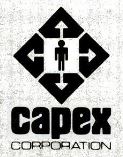
SPSS Statistics is a statistical software suite developed by IBM for data management, advanced analytics, multivariate analysis, business intelligence, and criminal investigation. Long produced by SPSS Inc., it was acquired by IBM in 2009. Versions of the software released since 2015 have the brand name IBM SPSS Statistics.

The history of software configuration management (SCM) can be traced back as early as the 1950s, when CM, originally for hardware development and production control, was being applied to software development. Early software had a physical footprint, such as cards, tapes, and other media. The first software configuration management was a manual operation. With the advances in language and complexity, software engineering, involving configuration management and other methods, became a major concern due to issues like schedule, budget, and quality. Practical lessons, over the years, had led to the definition, and establishment, of procedures and tools. Eventually, the tools became systems to manage software changes. Industry-wide practices were offered as solutions, either in an open or proprietary manner. With the growing use of computers, systems emerged that handled a broader scope, including requirements management, design alternatives, quality control, and more; later tools followed the guidelines of organizations, such as the Capability Maturity Model of the Software Engineering Institute.

CA Technologies, Inc., formerly Computer Associates International, Inc., and CA, Inc., was an American multinational enterprise software developer and publisher that existed from 1976 to 2018. CA grew to rank as one of the largest independent software corporations in the world, and at one point was the second largest. The company created systems software that ran in IBM mainframe, distributed computing, virtual machine, and cloud computing environments.
Cullinet was a software company whose products included the database management system IDMS and the integrated software package Goldengate. In 1989, the company was bought by Computer Associates. Cullinet was founded in Arlington, Massachusetts and later headquartered at 400 Blue Hill Drive in Westwood, Massachusetts.

Nixdorf Computer AG was a West German computer company founded by Heinz Nixdorf in 1952. Headquartered in Paderborn, Germany, it became the fourth largest computer company in Europe, and a worldwide specialist in banking and point-of-sale systems.

TELON, later renamed CA-TELON, is one of the first commercially successful application generators for building business applications.

Applied Data Research, Inc. (ADR), was a large software vendor from the 1960s until the mid-1980s. ADR is often described as "the first independent software vendor".

Capex Corporation was an American computer software company in existence from 1969 through 1982 and based in Phoenix, Arizona. It made a variety of software products, mostly system utilities for the IBM mainframe platform, and was known for its Optimizer add-on to the IBM COBOL compiler. Capex was acquired by Computer Associates in 1982.
Network Systems Corporation (NSC) was an early manufacturer of high-performance computer networking products. Founded in 1974, NSC produced hardware products that connected IBM and Control Data Corporation (CDC) mainframe computers to peripherals at remote locations. NSC also developed and commercialized the HYPERchannel networking system and protocol standards, adopted by Cray Research, Tektronix and others. In the late 1980s, NSC extended HYPERchannel to support the TCP/IP networking protocol and released a product allowing HYPERchannel devices to connect to the emerging Internet.
Edos is a discontinued operating system based upon IBM's original mainframe DOS. The name stood for extended disk operating system. It was later purchased by the West German computer company Nixdorf, who renamed it to NIDOS.

Hitachi Data Systems (HDS) was a provider of modular mid-range and high-end computer data storage systems, software, and services. Its operations are now a part of Hitachi Vantara.
Easytrieve is a report generator, sold by CA Technologies. Easytrieve Classic and Easytrieve Plus are two available versions of this programming language primarily designed to generate reports and are used by large corporations operating in mainframe, UNIX, Linux, and Microsoft Windows environments.
Computer Associates Panvalet is a revision control and source code management system originally developed by Pansophic Systems for mainframe computers such as the IBM System z and IBM System/370 running the z/OS and z/VSE operating systems.
Informatics General Corporation, earlier Informatics, Inc., was an American computer software company in existence from 1962 through 1985 and based in Los Angeles, California. It made a variety of software products, and was especially known for its Mark IV file management and report generation product for IBM mainframes, which became the best-selling corporate packaged software product of its time. It also ran computer service bureaus and sold turnkey systems to specific industries. By the mid-1980s Informatics had revenues of near $200 million and over 2,500 employees.
On-Line Software International, Inc. was a Fort Lee, New Jersey, company whose earnings reports were followed by The New York Times in the 1980s and 1990s. It was founded in 1969.
Penril DataComm Networks, Inc. was a computer telecommunications hardware company that made some acquisitions and was eventually split into two parts: one was acquired by Bay Networks and the other was a newly formed company named Access Beyond. The focus of both company's products was end-to-end data transfer. By the mid-1990s, with the popularization of the internet, this was no longer of wide interest.
Decision Data Computer Corporation, later Decision Industries Corporation and Decision Data Inc., was an American computer hardware company founded in 1969 and based in Horsham, Pennsylvania.
Candle Corporation was an American software company active from 1976 to 2004. The company spent the first two decades developing system monitoring applications for a variety of IBM mainframes and their corresponding software, their first being OMEGAMON which saw quick widespread adoption in commercial enterprises. In the mid-1990s, the company made pivots toward non-mainframe monitoring software and middleware. IBM acquired the company for between $350 million and $600 million in 2004.
The Librarian is a version control system and source code management software product originally developed by Applied Data Research for IBM mainframe computers. It was designed to supplant physical punched card decks as a way of maintaining programs, but kept a card model in terms of its interface. During the 1970s and 1980s it was in use at thousands of IBM mainframe installations and was one of the best-selling software products in the computer industry.







